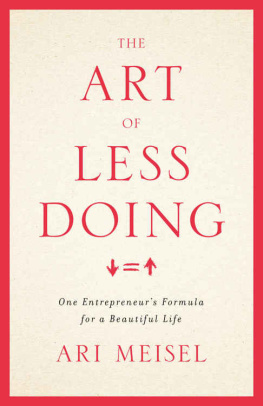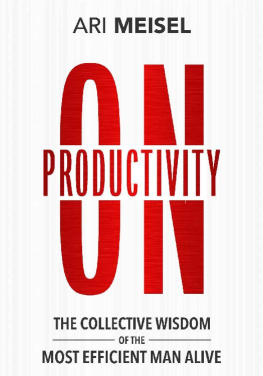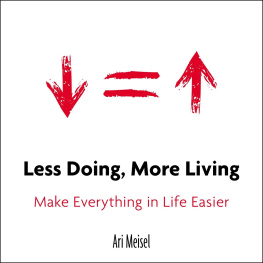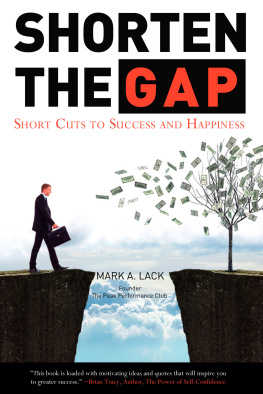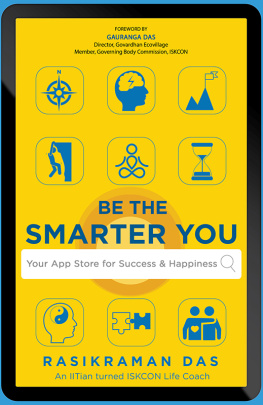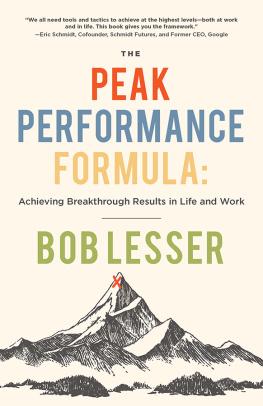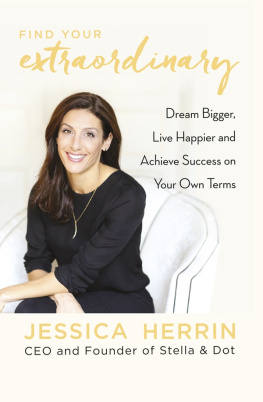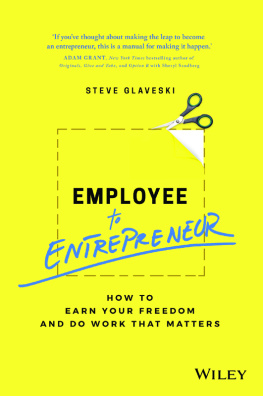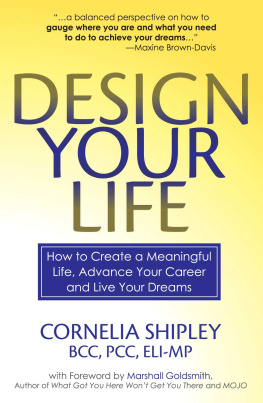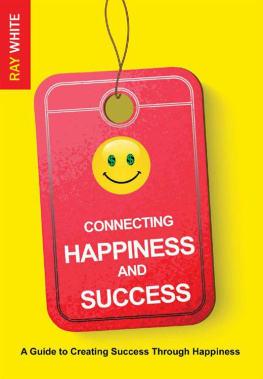The Wake-Up Call
T en years ago , I was diagnosed with Crohns disease, a chronic, extremely painful inflammation of the digestive tract. At the time, I was living a very unhealthy and stressful lifestyle, working fourteen-hour days and basically being a hard-charging workaholic. In short, I was behaving like the average American twenty-something male.
The pain became so bad at one point that my girlfriend (now my wife) and I went to the hospital to have it checked out. After he ran a few tests, the doctor left the diagnosis on my voice mail, which was an additional kick in my already wounded gut. I had to Google Crohns disease, which is the worst way to get medical information. The online descriptions of the disease were terrifying. (Just some of the buzzwords swimming around were colon cancer, surgery, pain, death.)
A second opinion confirmed the diagnosis, but at least I was working with a doctor with a modicum of bedside manner. With Crohns, or any autoimmune disease, there are levels of intensity to the drug regime. I started with the mildest, which had the least side effects, but was also not terribly effective. Finally, we landed on something that worked.
There are several theories as to what causes the disease. There is a strong genetic predisposition. Two thirds of people afflicted are Ashkenazi Jews, and Im half Ashkenazi, half Sephardi. It typically occurs in people under the age of thirty: I was under twenty-five at the time of diagnosis. Another contributing factor is severe gut dysbiosis, which is when antibiotics, stress, processed foods, smoking, and things of that nature compromise your gut bacteria. The immune system starts attacking healthy intestinal tissue, which leads to a whole host of other problems. The fix is to protect gut bacteria through probiotics, eating good fats, reducing stress, and sleeping better. Most of it comes down to diet and stress management, also significant contributing factors to the disease.
One of the problems with Western medicine is that we treat the symptoms and not the cause, which was what I did initially. I just wanted relief, and the prescriptions helped. At first, I didnt even think about changing my lifestyle or my habits. Every few months, I would get sick again and take the pills. This went on for a few years until one particular incident led to an epiphany. After a night of overeating and drinking, my system revolted against me. I wound up back in the hospital, racked with pain, with a 105 temperature for days.
Something had to give. It became clear to me that I could no longer just be a passenger on my own medical journey. I had to get in the drivers seat and take control. I was at war with my body, and I needed to get my battle gear on.
My path to real recovery started with data. I had been undergoing extensive blood testing every five weeks, so I had a lot of diagnostic information about my blood. I created spreadsheets and crunched numbers, and even though I didnt necessarily unearth any revealing information, I had a deeper sense of control. I felt like I was finally beginning to take an active role in my condition, which was the little push I needed to advance forward.
Diet and fitness were the next frontier. I dove into a new routine directly opposite of everything I had been doing before. I ditched meat and became a vegetarian for six months and later a pescatarian for close to three years. Ive always enjoyed working out, but in my early twenties, I was pumping iron and taking systemic steroids for the Crohns. I was ripped, but in an inflamed, angry man kind of way, and I was destroying my body. Instead, I found the most intense workout program Ive ever seen, Insanity, and committed myself to it like a religion. Sure, it took me close to three weeks to finish a single workout, but after sixty days I lost twenty-two pounds!
My personal approach in those days was a bit extreme, but thats the way I am by nature, and its what my body needed. Aside from losing weight and feeling better, I became addicted to the increased sense of control I had over my body. I was no longer letting something bad just happen to me. The sense of accomplishment from making better decisions was immediate.
Around the same time that I was going through my physical transformation, I started blogging about productivity. I wanted to devise a system to counter chronic stress and fatigue and to help people to feel better, to place a higher value on their time, and, ultimately, to lead better lives. The fact that the illness limited my workday forced me to find new and innovative ways to accomplish more in less time. I hadnt yet devised my system of Less Doing, More Living, but it was percolating through the blog posts. I knew the best way to test the validity of the concepts was to teach a class, which I did. Through student feedback and personal trial and error, the program crystallized.
A Framework for Life
What would you do if you only worked for one hour per day? Would you crumble or would you thrive? Just close your eyes for a minute and imagine a new reality for yourself. One in which you have plenty of time to do the things you really want to do with the people you care about. This new reality is completely within reach! It simply involves figuring out how to work efficiently and in much smaller amounts of time so you can put your energy elsewhere. It requires questioning what is possible on a high level and then breaking it down.
Everyone has different needs and pressures, so the end result will vary according to the individual. However, the basic tenants are applicable to everyone. We could all use a little more time in our day, and the method of finding it is universal. Through a philosophy anchored in the concept of less, virtually anyone can learn to streamline their workload and become more efficient in their day-to-day activities. By doing less, you will experience profound transformation and be able to take back your life across all spectrums: at work, at home, and in your mind.
The productivity framework I lay out in this book focuses on three concepts: optimize, automate, and outsource. Each of the three components is widely applicable and serves in different and important ways to simplify activities that can lead to damaging chronic stress. My methodology will ask you to think about and approach everyday tasks in a whole new way.
The first step in designing a work-life balance that works for you is to identify how you spend your time. Once you have a better understanding of how youre approaching everyday activities and how long they take, youll start to see that there are several things you can say no to or let go of entirely. Data collection, self-tracking, and analysis are key elements of transformation.
If youre working in a corporate environment with strict hours, you can apply the principles in this book to certain areas of your professional life and widely across your personal life. The last thing anyone wants or needs is to leave a hectic and stressful day at the office and find the same environment at home. There are systems and solutions to make your home life run like a well-oiled machine. Similarly, you can apply these principles to your health, which is where it all began for me. Cognitive therapy, sleep hacking, supplementation, and a variety of other methods can greatly enhance your biological performance. You can improve your personal finances by adding additional income streams through very little effort. The point is these strategies are designed specifically for people who feel they do not have flexibility or choices. The truth is everyone does, and Ill show you how to find and use both.

